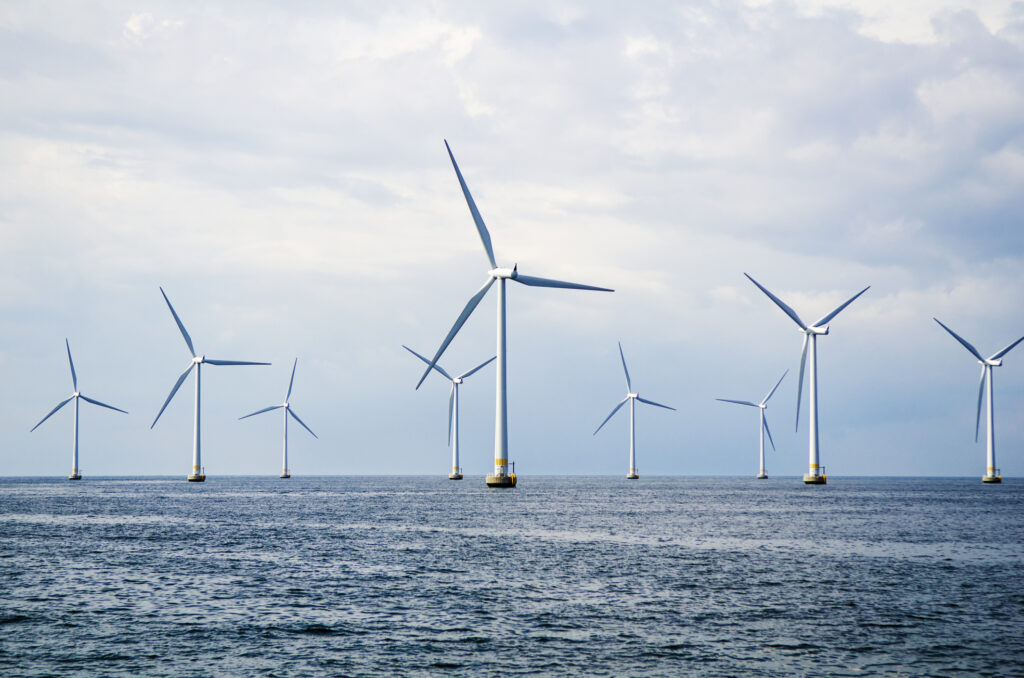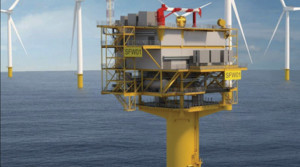New York’s First Offshore Wind Farm Will Be Powered by the First American-Made Wind Substation
Share

Engineering and construction firm Kiewit will build the substation in Texas.
Offshore wind developer Ørsted and energy provider Eversource announced on Wednesday that they have contracted with the company Keiwit Offshore Services to build the first-ever American-made offshore wind farm substation, which will serve the upcoming South Fork Wind project near New York’s Long Island.
Construction on the 132-megawatt South Fork Wind project is scheduled to begin in January 2022, and upon competition is expected to create enough energy to power 70,000 nearby homes — and will displace millions of tons of carbon emissions, the equivalent of taking 60,000 cars off the road.

The 1,500-ton, 60-foot-tall substation will connect to the 12 wind turbines on the farm, which is set to become operational by the end of 2023. Offshore wind substations are needed because they collect the power that is produced by wind turbines and bring that clean energy to the power grid.
The announcement of the first American-made substation is big news because it’s a step forward in the critical effort of building out an offshore wind supply chain in the United States.
Hundreds of union workers already are expected to help build the wind farm, and more than 350 workers “will support this South Fork Wind structure,” according to a press release from the companies. Fabrication workers in Ingleside, Texas will work with teams in Houston and Kansas to complete the substation, which is scheduled to be completed by spring 2023 and installed on site that summer.
“We’re helping to build a new U.S. manufacturing industry that will create thousands of good-paying jobs not just in the Northeast but in communities across the United States,” said David Hardy, chief executive officer of Ørsted Offshore North America. “We’re proud to partner with Kiewit to deliver the first American-made offshore wind substation.”
The South Fork Wind project isn’t the only big wind turbine news over the past few weeks. The United Steelworkers and US Wind announced on Aug. 3 a new steel facility will be built at Baltimore’s infamous Sparrows Point that will manufacture the foundations needed to anchor wind turbines to the ocean floor.
Both of these recent announcements show that the clean energy future is here – and now it’s time for the United States to build out its domestic manufacturing industry so that future will be Made in America, too.
Projects like New York’s offshore wind farm and the new steel facility at Sparrows Point provide a start. But they also should be coupled with smart public policy to strengthen and grow clean energy manufacturing and its related supply chains and infrastructure.
For one, the United States needs to significantly invest in clean energy, both in research and development and in efforts to encourage domestic manufacturing. Applying Buy America preferences to government spending will ensure that when taxpayer money is allocated to these projects, the money is reinvested right back into American workers and companies that are making their products in the United States.
But it’s also vital that the United States be willing to stand up for its domestic industries when necessary.
Despite a promising start, the U.S. solar panel industry was decimated by a surge in cheap, unfairly traded imports from China, which heavily subsidizes its industry, lacks environmental standards and stands accused of utilizing forced labor. The U.S. now makes just 1% of solar panels produced globally. The implementation of tariffs has helped steady the solar industry, even leading to a growth in production in recent years, and this trade tool should be utilized when needed.
Make no mistake: China’s rapid development of its wind turbine industry is a reminder that the United States cannot wait to invest in itself. Companies and workers already are stepping up to build clean energy technology throughout the United States, and it’s time to implement the policy needed to make sure these new industries can succeed, now and in the decades to come.
